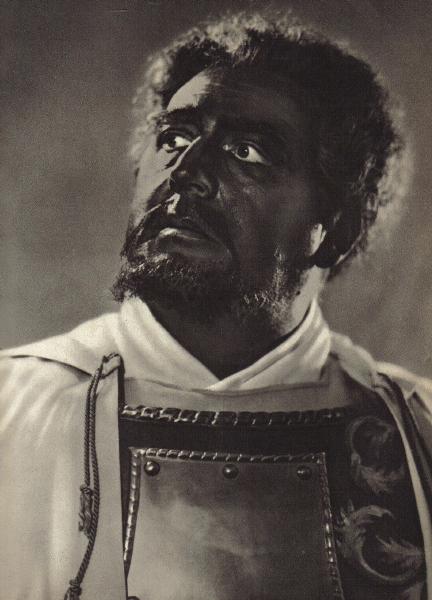Günther Treptow
22 October 1907 Berlin – 28 March 1981 Berlin
In RA format
In RA format
Treptow studied voice in Berlin as a baritone, then with former bass Giovanni Scarneo in Milano, who made a tenor of him. Back to
Berlin, Treptow started to look for a contract and to audition. He had become a member of the Nazi party and their paramilitary
wing "Sturmabteilung" as early as 1926 (!); now, in January 1935, he discovered that his mother was Jewish according to the
racist criteria of his party. He cancelled his membership, and – now considered "half Jewish" – was banned from any
musical profession: his career seemed to end before it had even begun, although his Sturmabteilung unit testified that he had
always been a devoted and useful member. Treptow turned to Rudolf Heß for help, who intervened with Joseph Goebbels. A
year after his "problem" had emerged, Treptow was accepted into the troupe of the Deutsche Oper Berlin, with a special permit
from Goebbels himself. Treptow made his debut as the Italian Singer on May 20th, 1936.
But he could not establish himself against the competition of singers like Pistor,
Haller or Fidesser, and so he went to
the Vienna Volksoper in 1938, where he sang Pedro, Florestan, Max or Stolzing. In summer 1939, he was Tannhäuser at the
festival in Munich and in Zoppot; that was his breakthrough. Clemens Krauss hired him for the Munich opera (1940–44). In
the first post-war opera performance in Berlin, he sang Florestan – funny that in such a symbolic celebration of freedom
from the Nazi reign, the lead tenor was someone who had joined the Sturmabteilung in 1926! He was, together with conductor
Leopold Ludwig and baritone Karl Schmitt-Walter, instrumental in rebuilding musical life in Berlin – particularly in
saving the skin of many ex-Nazis of the Deutsche Oper troupe.
From 1947 to 1955, he was back to Vienna (at the Staatsoper, this time). Now he began to build an international career:
Zürich, Brussels, Paris, London, Bologna, Venice, Milano (the Furtwängler Ring at La Scala in 1950), Florence,
Naples, Torino, Genova, Barcelona, Moscow, Buenos Aires. 1951 saw Treptow's Met debut as
Siegmund. Of his initial performance on February 1st, Olin Downes of the New York Times wrote: "He has a voice of warm and
dramatic character, though his vocalization does not consistently release and focus the tone to the best advantage. (...) Nor
would we claim that Mr. Treptow is an original and distinguished actor." Treptow had one of the shortest careers for a leading
tenor in the history of the Met: six performances in three roles (Florestan, Siegmund and Tristan). Forty-two days after his
debut, he was on his way back to Berlin.
The same year, at the reopening of the Bayreuth Festival, Treptow was Siegmund, and became one of the leading tenors of
"New Bayreuth". 1955–61, he was a member of the Staatsoper Berlin, which was now in the German Democratic Republic. When
the Berlin Wall was built, Treptow returned to the Deutsche Oper, where he stayed until retiring in 1973.
His repertory comprised, other than the roles already mentioned, Siegfried, Rienzi, Parsifal, Don José, Canio or Otello.
Many studio and live recordings preserve his voice.
References: "Dead Tenors' Society" YouTube channel (much recommended!)
Preiser CD liner notes
Kutsch & Riemens
Misha Aster: Staatsoper. Die bewegte Geschichte der Lindenoper im 20. Jahrhundert, München 2017
Jörg Osterloh: "Ausschaltung der Juden und des jüdischen Geistes". Nationalsozialistische Kulturpolitik 1920–1945, Frankfurt am Main 2020
I wish to thank Daniele Godor for the picture.
I would like to thank Thomas Silverbörg for the recording (Parsifal).
|
